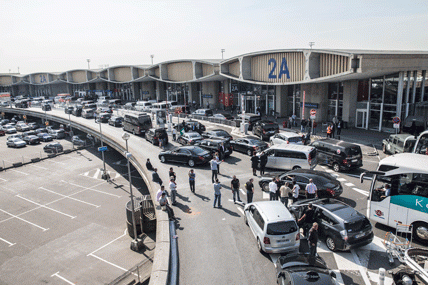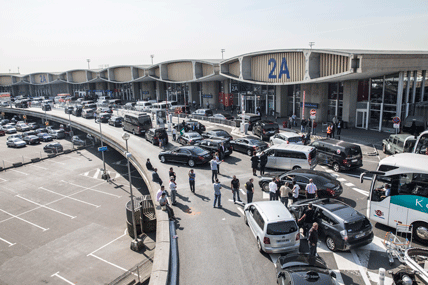
French taxi drivers protesting Uber block the road to Charles de Gaulle Airport outside Paris, June 25, 2015.
Faster than you can say “There’s an app for that,” the economy is being transformed. Central to this transformation to what has been dubbed the “app economy” is the use of “smart” technologies by cellphones, tablets, and other mobile devices. In 2007, mobile apps were all but unknown. Then came Apple’s iPhone and App Store. As of 2011, upwards of 25 billion apps had been downloaded. App-driven economic innovation, or disruption, is starkly evident in the conflict between traditional taxi companies and the new ride-sharing companies like Uber and Lyft (and Hailo and Sidecar and Flywheel …). The combination of GPS location, instant messaging, and mobile payment created a new avenue for would-be passengers to hire available ride-sharers.
Competition is fundamental to free enterprise, and as technology changes, companies must adapt—or else. But regulatory frameworks also play a large part in modern-day economies. The conflict pitting traditional taxi companies and their drivers against the new kids on the block centers around the “regulatory burden” that taxis operate under—which the new ride-sharing outfits have been able, for the most part, to steer clear of. The contest is playing out in cities across the United States as well as in other countries. In France, for instance, the situation turned violent over the summer as French taxi drivers staged a national strike.
In a sense, taxi companies, some of which operate in cities like a monopoly, have only themselves to blame. As an industry, taxis have been slow to install GPS systems, to accept credit card payments, and to collaborate to make dispatching more efficient. On all these points, the app-based ride-sharing companies like Uber have exploited an edge. They are able to quickly respond to consumer demand, and they typically beat the prices of taxis. Using smartphone location data, they match passengers and drivers more efficiently than the company-dispatch systems.
Image credit: © Balint Porneczi/Bloomberg via Getty Images
Related Links
- The Battle between Uber, Lyft and Taxis Has Moved to Airports
This article explores the expanding battlefield of the “taxi wars.”
(Source: Washington Post, June 14, 2015) - Uber vs. Taxis: One City’s Incredibly Simple Solution to the Turf War
This article examines whether taxis and ride-sharing apps actually can coexist.
(Source: Forbes, May 16, 2015) - The Secret History of the Taxi Wars
Read this article for key background behind the “taxi wars.”
(Source: Grist.com, March 5, 2015) - The Taxi King
This podcast follows the rise and fall of New York City’s “taxi medallion king.”
(Source: Planet Money, July 31, 2015) - France’s Uber-Taxi War Is On
This article gives a glimpse into the “taxi wars” in France.
(Source: Politico.eu, June 25, 2015) - App Economy
Read about the app economy here; includes links to related economics terms.
(Source: Techopedia; accessed August 10, 2015)




